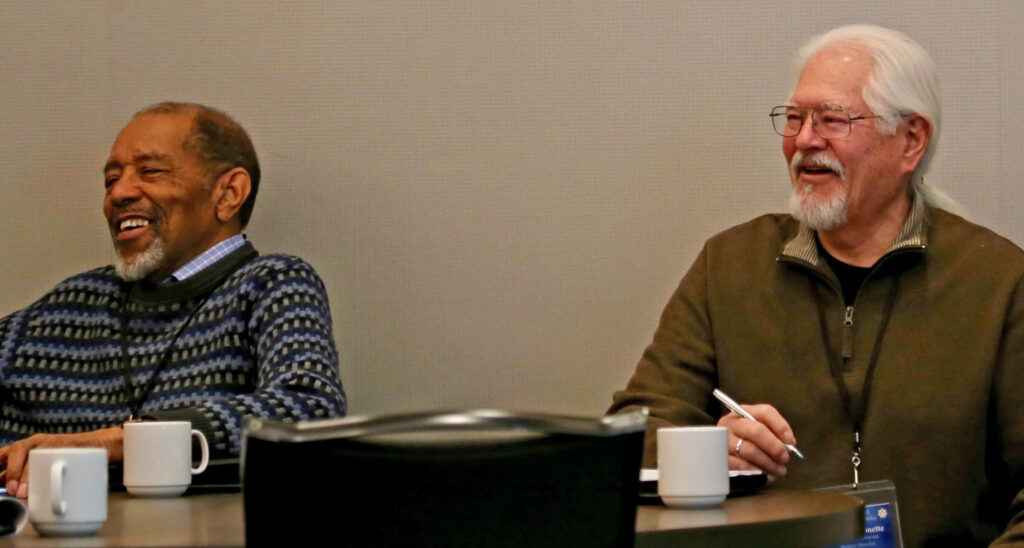A recent workshop offered encouragement and advice for colleges seeking funding through the National Science Foundation’s Tribal Colleges and Universities Program
By Paul Boyer

The National Science Foundation has been supporting tribal colleges since the late 1960s—making its first award to Dine College, the nation’s oldest TCU—just a year after its founding. This commitment grew in 2001 with establishment of the Tribal Colleges and Universities Program (TCUP), which now awards approximately $10.8 million annually to tribal colleges and eligible Native-serving universities.
While about 30 TCUs have received at least one award from the NSF, a recent workshop was held for colleges that have yet to seek TCUP funding beyond a planning grant, or have not yet submitted a fundable proposal. Hosted by Sisseton Wahpeton College, a tribally controlled college located on the Lake Traverse Reservation of South Dakota, the three-day workshop offered tutorials on effective proposal writing and reviewed the intricacies of NSF grant management.
According to TCUP Program Director Dr. Jody Chase, TCUP initially focused on helping tribal colleges strengthen their core STEM programs through planning and capacity-building grants (known by the acronyms ICE-TI and Pre-TI). At the time, most tribal colleges offered only a small selection of introductory STEM courses. Many lacked the faculty, facilities and equipment needed to do more.
Through support from NSF and other federal agencies, many of these colleges were able to expand the number of courses and degrees. Today, 14 TCUs provide baccalaureate STEM degrees in disciplines ranging from Native environmental science to engineering.
As the colleges have grown, so have the number of funding opportunities, Chase said. TCUP now includes strands supporting faculty research, teacher education programs, cyberinfrastructure, and development of interdisciplinary research centers, among others initiatives. Award limits range from $200,000 over two years to $3.5 million over five years.
Reviewing the fundamentals of effective grant writing, NSF Program Officer Regina Sievert emphasized the importance of defining both goals and objectives. Goals, Sievert said, “are broad aspirational statements about the ultimate outcomes of a project,” while objectives “are steps towards the goal.” For example, if the goal is to develop a new BS degree, objectives might include hiring faculty, developing courses, buying lab equipment and finding industry partners.
Presenters also discussed the specific parts of NSF proposals, including required statements addressing the proposed project’s “broader impacts” (the benefits to society and science) and ”intellectual merit” (how it “advances knowledge in the selected field and more broadly in other fields”). Both must be addressed for a proposal to be considered.
Several speakers reviewed all of the many supplementary documents required in an NSF proposal, including brief biographies of key personnel, a data management plan, and documentation of current and pending support. Collecting and correctly formatting this information can be a time-consuming process, participants were reminded. Speakers noted that there are multiple videos devoted to mastering SciENcv, the NIH platform used by the NSF and other agencies for generating biosketches and current and pending support documents.
Presenters urged attendees to start the grant writing process early, stressing the value of working as a team, staying in touch with college administrators, submitting the proposal days (not minutes) before the deadline and contacting the NSF program officer with questions.
Pamela Hawkins, former director of operations at the NSF, also reviewed the fundamentals of successful grant management, covering indirect costs, subawards and the importance of submitting timely annual and final reports, among other issues.
Who is eligible to submit a TCUP proposal? Broadly speaking, it is open to “federally recognized Tribal Colleges and Universities, Alaska Native-serving institutions and Native Hawaiian-serving institutions.” However, the authorizing language has many clarifying exclusions and caveats, so any institution unsure of its eligibility should check first with TCUP staff.
While submission of an NSF grant is complex and unavoidably bureaucratic, the culture of TCUP is welcoming and supportive, said workshop organizer Scott Morgan, Sisseton Wahpeton College’s director of institutional research and programs. “You don’t get this level of support often with other grants,” he said, praising NSF staff for attending and contributing to an event organized by a TCU.
Morgan said that there is also a climate of mutual support among the tribal colleges. “The community is very welcoming and willing to share their experiences with other colleges,” he said. “The more people that submit high quality proposals, the better it is for everyone.”
In post workshop evaluations, several attendees returned the praise. “Several people made comments like this is one of the best workshops of this type they’ve attended,” Morgan said, because it focused on not on general grant-writing strategies but on the specific requirements of writing an NSF-TCUP proposal.
Jody Chase, who has led the program for over twenty years, captured the can-do spirit of her program and the colleges in what has become the signature conclusion to her presentations. It’s a quote from Margaret Mead: “Never doubt that a small group of thoughtful, committed citizens can change the world. Indeed, it is the only thing that ever has.”
The NSF’s proposal submission and grant administration guidelines can be found here.
Paul Boyer is editor of Native Science Report.
Story published March 22, 2023.
• • •
Enjoyed this story? Enter your email to receive notifications.
